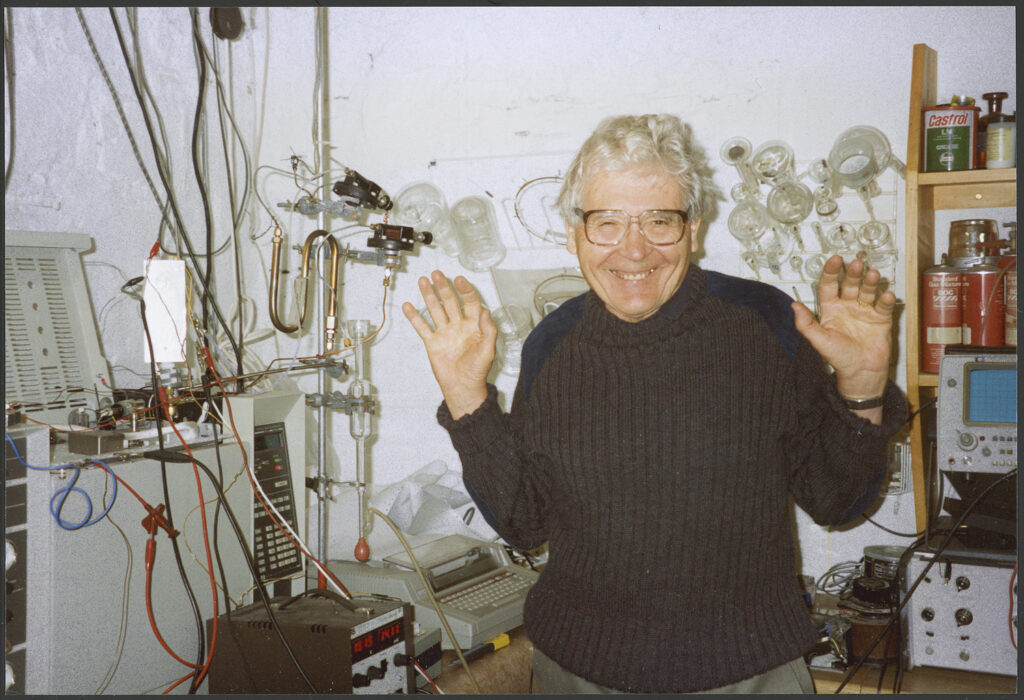The Science Museum was a childhood inspiration for the pioneering independent scientist and inventor James Lovelock, and in 2012 acquired his archive, which documents the birth of his hugely influential idea that the Earth is a self-regulating system.
Called Gaia theory, it was initially ridiculed as new-age nonsense but in the 1980s Lovelock’s postgraduate assistant Andrew Watson put the theory on rigorous mathematical foundations with what they called Daisyworld, a computer simulation in which the climate of an idealised planet was regulated with black and white daisies.
Among the items acquired by the museum was a Hewlett Packard computer that Lovelock used for Daisyworld, along with a printout which shows how reflective white daisies flourished when temperatures rose, cooling the planet, while the heat-absorbing black daisies thrived in colder conditions, helping to warm it.

Lovelock died three years ago, aged 103. Feedback loops are now a core feature of contemporary climate models, also feature in simulations of biological diversity, even computer games, and Gaia plays a key role in the development of the scientific field that is now called Earth System Science.
Today, in the journal Chaos, a paper by Constantin Arnscheidt of the University of Cambridge and Hassan Alkhayuon of University College Cork has uncovered a new layer of fragility in Daisyworld: even in this self-regulating paradise, a simple change can cause the whole ecosystem to collapse.
Because of the model’s simplified and insightful nature, they wanted to use it to study the idea of ecological tipping points, where a tipping point is a point where small changes can trigger abrupt shifts.
When it comes to the actual climate system, potential impacts of passing tipping points cannot be easily reversed and extend well beyond the affected region. Examples include the collapse of the Greenland ice sheet or disruption of ocean currents.
Real-world examples of ecological tipping points include coral reef collapse due to ocean acidification or deforestation turning the Amazon rainforest into a savanna.
‘Tipping points are widely understood as thresholds that, if crossed, cause a system to destabilise and undergo significant and irreversible change,’ said Alkhayuon. ‘In other words, tipping points represent a ‘critical level of change.’
However, he added, real-world systems are highly nonlinear, in other words they can show complex and unpredictable behaviour, and often, the rate of change—rather than the degree of change—plays the most significant role in destabilising a system.
Tipping can occur if the environment gets too extreme, but it can also happen if the environment changes too fast. “Essentially, if you push the system quickly enough, you can trigger a collapse even if you don’t push it that hard,” said Arnscheidt. “This is called rate-induced tipping: The rate of change is the key factor in determining whether the system tips.”

They discovered that rate-induced tipping can happen even in Daisyworld. If the planet heats up or cools down too quickly, all the daisies go extinct, even if they would otherwise have been able to survive under those conditions. ‘We demonstrated that the daisy biosphere could collapse if the environmental conditions change too quickly,’ said Alkhayuon. ‘However, the daisies could survive the same level of change if it occurred at a slower rate.’
The fact that we can find rate-induced tipping in a model as classic and well-studied as Daisyworld, more than four decades since its inception, suggests that rate-induced tipping might be more common than scientists realise.
‘Rate-induced tipping has been shown to be relevant in more and more systems, especially complex ones like those in Earth science and ecology,’ said Arnscheidt. ‘It’s also a phenomenon that will likely be quite relevant for humanity as we continue to navigate an era marked by rapid human-driven rates of change.’
Backed by £81 million, the UK’s Advanced Research and Innovation Agency, ARIA, recently launched a programme that aims to develop an early warning system for tipping points.
